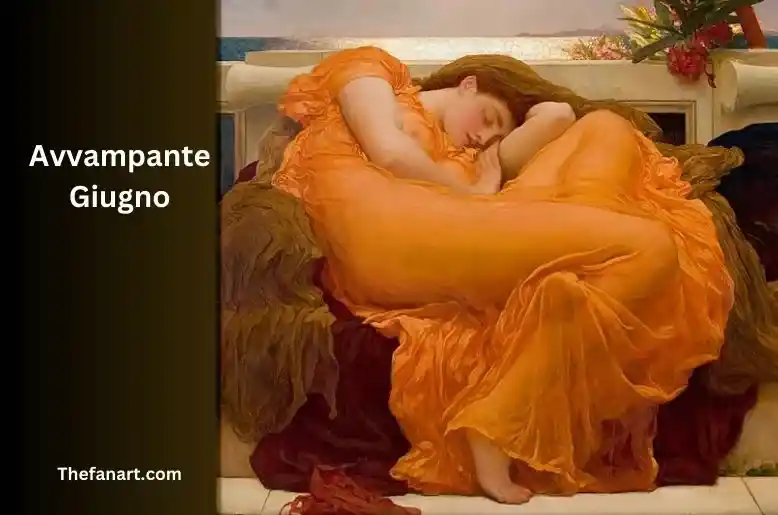Avvampante giugno is an art piece in English that is titled “Flaming June” by the celebrated Victorian Britain artist Frederic Leighton. It later turned out to be his most iconic work at the moment but was absolutely not a straight line getting it in line for the public’s consciousness.
Originally painted in 1894, “Avvampante giugno” never expect to be popular. It was originally an accompaniment to a larger work called “Summer slumber.” Leighton envisioned it to situated inside a marble bath in the work. Fortunately, artists’ plans can change and “Avvampante giugno” eventually became a striking portrait all its own.
Controversial Art
The picture represents a sleeping lady with bared to the warm golden light. The classicism is typical for the academic training of Leighton, yet the sensuality of the pose and the woman’s flowing red drapery caused a scandal in the strictly mannered Victorian society.
Rediscovered Hidden Gem
Although the first run-in with quite a bit of controversy, “Avvampante giugno” found its way on the cover of a Christmas issue of a British magazine in 1895. For the rest of the early 20th century, it seemed to melt away from everybody’s eyes. Then, in the 1960s, it reappeared.
The rediscovery coincided with a sweetened reverence for Victorian art. Being put up for auction, the painting didn’t meet the reserve. This failure stroke was very lucky. The Ponce Museum of Art in Puerto Rico seized the moment and snapped up the hidden treasure, where it remains to date. Explore about La Monstrua art now.
A Legacy of Burning Bright
“Avvampante giugno” has transcended its initial scandal and Victorian setting, with the image loved and reproduced by the thousand in posters and media. The interest for each viewer—and the beauty of the sleeping beauty in the golden light—has only intensified to prove “Avvampante giugno” to be one of the hallmarks of the strength of vision of Frederic Leighton as an artist.
The Birth of Flaming June
Inspiration and Concept
The currently illustrated piece “Flaming June” dates to 1895 when the author belonged to the mature period of his art. He represents a young woman apparently sleeping deep and calm, with a long transparent orange dress on her. The sources of inspiration are taken to be from classical myths. It has fascinations with the beauty of human forms.
Composition and Technique
The composition of “Flaming June” allowed Leighton to gain control of the composition and technique. The sleeping female form diagonal on the canvas balances the composition nicely and brings harmony and tranquility to the eyes of the beholder. There is a creation of depth and dimension through light and shadow, and the brilliant orange gown draws the eye to the main figure.
Symbolism and Interpretation
“Flaming June,” has great symbolism and ambiguous in itself. While the lying woman is the symbol of tranquility and soothing comfort, the vivid orange gown testifies to characteristics of warmth and vitality. Some art historians believe that this painting, too, reflects the thought process of Leighton regarding death and the impermanence of beauty.
The Legacy of Flaming June
Critical Reception
When done, “Avvampante giugno” won far more notice from a broader audience, including critics, as well as acceptance across the board. It exhibited at the Royal Academy of Arts in London. It brought Leighton acclaim for the technical brilliance and emotional intensity wrapped up inside. The successful image fully solidified his reputation as one of the leading painters of his time.
Rediscovery and Popularity
The years following his death in 1896 witnessed the disappearance of “Flaming June”. Rediscovered in the 1960s, the painting now enjoys the fame of a global classic. The artwork resides in Museo de Arte de Ponce, Puerto Rico.
Impact on Modern Art
“Flaming June” proved to have a lasting effect on all that followed in the arts in relation to beauty, color, and emotion that many artists would show in these media. The answer to why the popularity of the painting continues is evident. It associates with timelessness and artistic importance.



